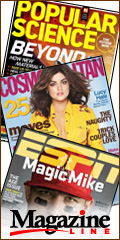Speed-Reading Techniques
Reading Myths
1. Reading is linear. I had always figured reading was a linear process; you know, start up front and grind through to the very end in the exact order it was printed in. Reading is no more linear than thinking is, (or I eventually discovered, than writing; few writers start at the beginning -- indeed, they usually "write the first part last."
2. True reading is word-for-word. I started as a kid looking at individual letters. They didn't help much. Next I started sounding out syllables. Finally, I could read whole words. Why stop with words? Well, I know one reason� I had a college professor who made us swear we had "Read every single word" of our collateral reading. Why? He didn't make us swear we'd "read every single letter." The answer is simple: that professor (like me) had never moved from letters, syllables, and words, to reading phrases, sentences and paragraphs. He assumed the only way to read thoroughly was by the laborious method of reading one word at a time.
3. Reading is a laborious task which takes a long time. Not at all! Reading can be both fun and fast. Indeed, speed reading is like auto racing -- it is far more exciting.
4. All parts of a book are of equal value. This myth persists until you actually write your own book. Then, all at once you realize there is "filler" material , illustrations, and even sometimes whole chapters jammed into a book just because the publisher insisted. Take messages for instance. Ever hear a message and wish you could put it on fast forward over that long story illustrating a point you already understand? Well, in reading you can fast forward.
5. Reading faster will reduce retention. Sorry. It should be that way, shouldn't it? Those who groan slowly through a book painstakingly sounding out every single word, maybe even moving their lips, should get a greater reward shouldn't they? Sorry. In fact, speed reading techniques will increase one's comprehension and retention.
Getting Ready to Read
FIRST: ELIMINATE ALL DISTRACTIONS: Get rid of ANYthing your mind could think about besides the reading material. Is there conversation? Activity? TV? An uncomfortable seat? Music in the background? (OK OK, I know many of my readers are college students who claim they "study better" with music in the background. Go ahead and claim it -- but you are wrong. You might "like it" better, but you do not study better. ANYthing which might occupy your mind waters down your concentration -- even occupying your "mind-in-background." Fool yourself if you wish -- but if you really are serious about reading faster, eliminate distractions.
SECOND: Ask: What is my purpose? Why are you reading this? And what kind of literature is it? Is it a classic or fiction work you are reading for fun? Then, why hurry through it at all? Like a leisurely meal, sit back and taste each bite -- turn over the delicious phrases in your mind. Or is collateral reading for a course where you are must be familiar with the central notions? Then finding the notions is why you are reading, right? Or maybe you are reading collateral where you will be tested on the content? Or maybe collateral reading where you will be required to say, "I read every single word?" Or is this a book where you will be tested on the terms and dates therein? Or, maybe you are just reading the book searching for some new ideas for your own situation. Or you have to write a review. Or maybe you plan to teach it to others. See how different your purpose might be for each? Before you open the book, take a minute to state your purpose to yourself. It will largely determine how you read the book from then on.
THIRD: Do a 10 minute PRE-READ. Take ten minutes or less and pre-read the entire book. Go ahead and try this if you've never done it before. Treat a book like a jigsaw puzzle. Dump it out, then organize all the pieces first before putting it together. Read the dust cover and any cover reviews. Then look through the author blurb. Move to the Table of Contents and see if you can figure out the whole book from this page. Page through the entire book, page by page and glance through all summaries, tables, pull-out quotes, diagrams(especially), and scan through all the section titles and you go.
FOURTH: Read the KEY CHAPTER. Start using the rapid reading techniques mentioned later to read this KEY CHAPTER through. You are not obligated to wait until you have read all the chapters before this one, as if you must eat your green beans before the ice cream. The book is yours -- go ahead and get the central idea before you start!
Once you've read the key chapter you are ready to read the rest. In order from the front to the back, or in some other order which better suits your purpose. Now for some actual reading tips tips.
III. Rapid Reading Techniques
1. Raise your speed- comfort level. How comfortable are you speeding in a car? How fast do you have to go before you feel you are "on the edge?" 70 MPH? 90? 120? How about 210 MPH, the speed the Indy car drivers can average? Get the point? Some people have learned to drive faster; their comfort level has been raised. You can do the same thing for reading. Face it, speed-reading isn't mostly about technique; it is about mind set. Indeed this may be the reason you can play a CD while reading -- you are merely driving along at 25MPH. Can you imagine an Indy car driver playing music in the background? No. The driver focuses all his or her skills on the track. If you are out for a Sunday afternoon stroll in your book, then ignore this. But if you are serious about becoming a speed-reader, then start expecting more of yourself.
2. See the book as a mine full of ORE not GOLD. Books offer wonderful gold to the prospector. But the reader must sort through tons of ore to find and refine the gold. The speed reader changes mindsets: quits fooling around with the ore and searches for the gold. What is a book anyway? What are words? They are "carriers" of truth, thoughts, ideas, a thesis, information, terms, concepts, notions. One reads a book to get the message, not to obsess on the words. (I'm tempted here to talk about Bible study, but we shall let it pass this time.) Switch your mindset to looking for the gold.
3. Quit Subvocalizing. Most of us learned to read by sounding out the words. The trouble is, most of us never stopped. Sure, maybe we no longer audibly sound them out, or even move our lips, but in our heads we are "reading to ourselves." We have learned to read by Mouth-and-Ear. To become a speed reader one must discard this habit (or at least reduce it) and adopt the eye-and-mind method. It is mostly a matter of mind set. Instead of acting like the ear (even in one inside your head) is the route to the mind, begin believing that the eye is the gate to the mind. Start drinking in books through your eyes. Let the books pass into the mind directly from the eye, skipping the mouth and ears. Go ahead and start trying it.
4. Use your finger. For most beginning speed-readers this is a shock. They remember reading in grade school with their finger and assume it slows one down. Actually the finger is your pace car. It leads you forward at a speedy pace, and keeps you on focus and avoiding back-skipping. There are several ways to use your finger (or hand) but just try it out for starters. As you improve, buy one of the books on speed-reading and settle on the pattern which works best for you.
5. Break the Back-skip habit. Most of us read along a line of type like this one to get the interpretation of the meaning, but as we read our eyes jump back to dwell on a word we just passed. We do this without knowing it. In fact, probably the only way to discover how many times you back skip is to have someone watch you read and count the eye-darts back. But, unless you have someone you feel pretty comfortable staring you in the face while you read, just trust me -- you probably back-skip. How to stop? First confess you do it. Then start recognizing when you do it. Finally when tempted to back-skip, treat the book like a movie -- that is, even if you miss something in a movie, you don't stop the video and replay it. You just let it flow on through, hoping you'll make it up later.
6. Use your peripheral vision. Just like you must develop a muscle in the gym, so your mind can be trained to use the eye-gate to take in a broader amount of data. For instance, instead of reading left to right across the lines, pretend there is a line right down the middle of this page and you are following the line. Let your eye take in through peripheral vision the phrases to the right or left. Can you do it? With practice you can train your mind to read on "both sides of the road" even though your eyes are on the center line. To practice this skill most speed readers actually draw lines down pages of a book until they have mastered the skill with an invisible line. Let your mind drink in the information on the page without looking directly at it -- just like you "see" the sides of the road when driving an automobile.
7. Learn to read KEY WORDS. 40-60% of the words on a page are neither critical nor important. Indeed, if someone took white-out and hid them from your sight, you could still figure out what the paragraph was communicating. So, it stands to reason that if you could figure out which are these KEY WORDS you could scan past the other words and let your mind fill in the blank. Train your mind to find these key words and you'll add even more speed to your reading.
8. Eliminate "Bus Stops" (Eye rests). As your eyes read down this line they stop periodically and "rest" on a word. Children's eyes often rest on every single word as they learn to read. Then as you grow your eyes move smoothly down the line like a lawn mower, then you stop a split second on a word, then start back up again. Most reader never get over this habit, but like a bus stopping at every corner, it slows down your progress. Try to reduce your eye rests to 3-4 per line, maybe even less as you get better� keep the eye moving smoothly line after line, letting your mind drink in the knowledge on the line.
9. Take breaks. The research is clear. Steady reading hour after hour is less efficient than taking a five minute break every hour or less. Sit down to read 100 pages in the next hour. Set an alarm even. Then reward yourself with a cookie or sandwich when you've reached your goal in 60 minutes.
10. Set a time goal. Have a 300 page book to read? Decide how fast you'll read it. If you are not a speedy reader, maybe you'll only set the US average reading speed as your goal: one page a minute (250 words/min.). Or if you are already an above average reader, set 100 pages an hour and plunge in. If you picked 100 pages an hour, that's 50 in a half hour, 17 per 10 minutes or 1.7 pages per minute. Keep on track� pretend like you are in an auto race� push yourself, concentrate, get yourself out there on the "racer's edge" -- the line just short of out-of-control, yet still in command. Do it; it will be exciting!
IV Retention Techniques
1. Underline, circle, make margin notes. Not highlighting the whole page like some students do! Usually you will not mark more than two or three items per page, and many pages will have no markings. Marking pages increases recall -- do you have a marked-up Bible? If you do, you can almost "see" the page in your head when recalling it. Marking helps. (Highlighting may help -- your own markings, however, are probably superior).
2. Dog-ear important pages. In a 250 page book there will probably be 25 pages worth dog-earing. Turn down the page to return later. The bigger the dog-ear the more important the page. Most books have only four or five half-page-dog ears.
3. Transfer key notes to front of book. Got a great point here? The central message? The quote which essentially represents the whole book? Write it down in the front of the book. Why? Generally speaking when it comes to new information you either "Use it or lose it in 20 minutes." When you discover it, flip the book open to the front and scribble it down; it will cement the notion into your mind. Better yet, link it to something you already know and write that down too. Linked information can be recalled far better than isolated information.
4. When finished, re-read dog-eared pages. Just run back through and re-read the gold. Here is the essence of the book (if you made judgements right going through).
5. Now write an "abstract" in the back or front. You are finished! Go for a pizza� but not just yet. Take a few more minutes and write an "abstract" up front in your own words. When the writer submitted the proposal for this book, he or she probably actually had a single paragraph or page, outlining what this book was all about. To summarize the book, simply "reverse engineer" the book back to the author�s abstract or thesis.
6. Consider drawing a "MindMap" of the contents. If you are going to be tested on this book, get someone to teach you how to use Tony Buzan's "Mind Map" to remember the entire book on a single page. Remember, the mind mostly recalls ideas and pictures, not words. A Mind Map will enable you to "picture" the whole book and you'll look like you posses a "photographic" (which you really don't need, if you simply follow the advice in this article).
7. But if you borrowed the book, and can't mark it, dog-ear it, or otherwise "use" this took -- then use 3M stickers instead of dog-ears, and write your comments on half-sheets of paper as you go.
Finally, remember this: speed-reading is not some magical secret you can pick up in ten minutes and Presto! You now can read 1000 words per minute. True, you can learn to read faster; perhaps double your present speed in two weeks. But to become a life-long rapid reader (like becoming a proficient race car driver) takes time, concentration and practice. This short article can get you started, but to really become expert you'll need to practice plenty.
Here are some more helpful links:
http://survivalguidefornewparents.blogspot.com/
http://look4it-buscalo.blogspot.com/
Friday, July 6, 2007
Subscribe to:
Post Comments (Atom)
 Stumble It!
Stumble It!




























1 comment:
Thanks for the speed reading tips I am going to try them
Post a Comment